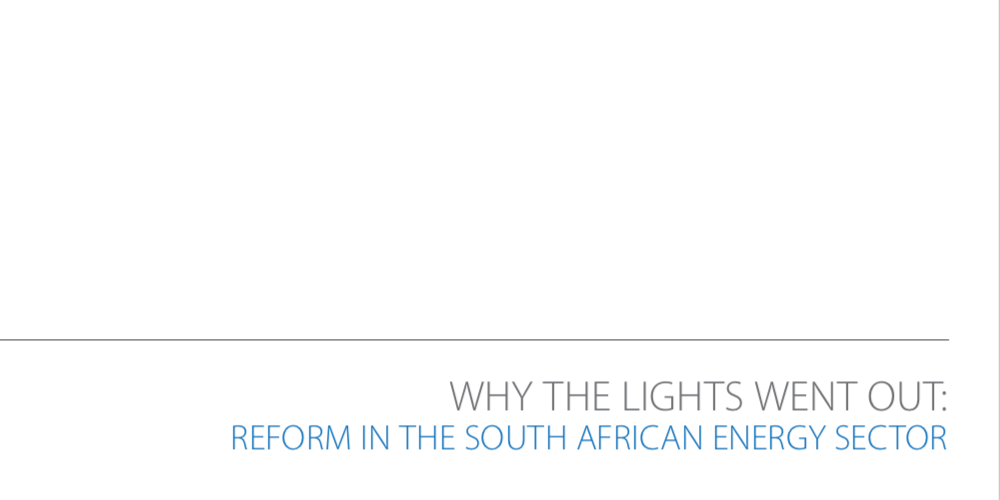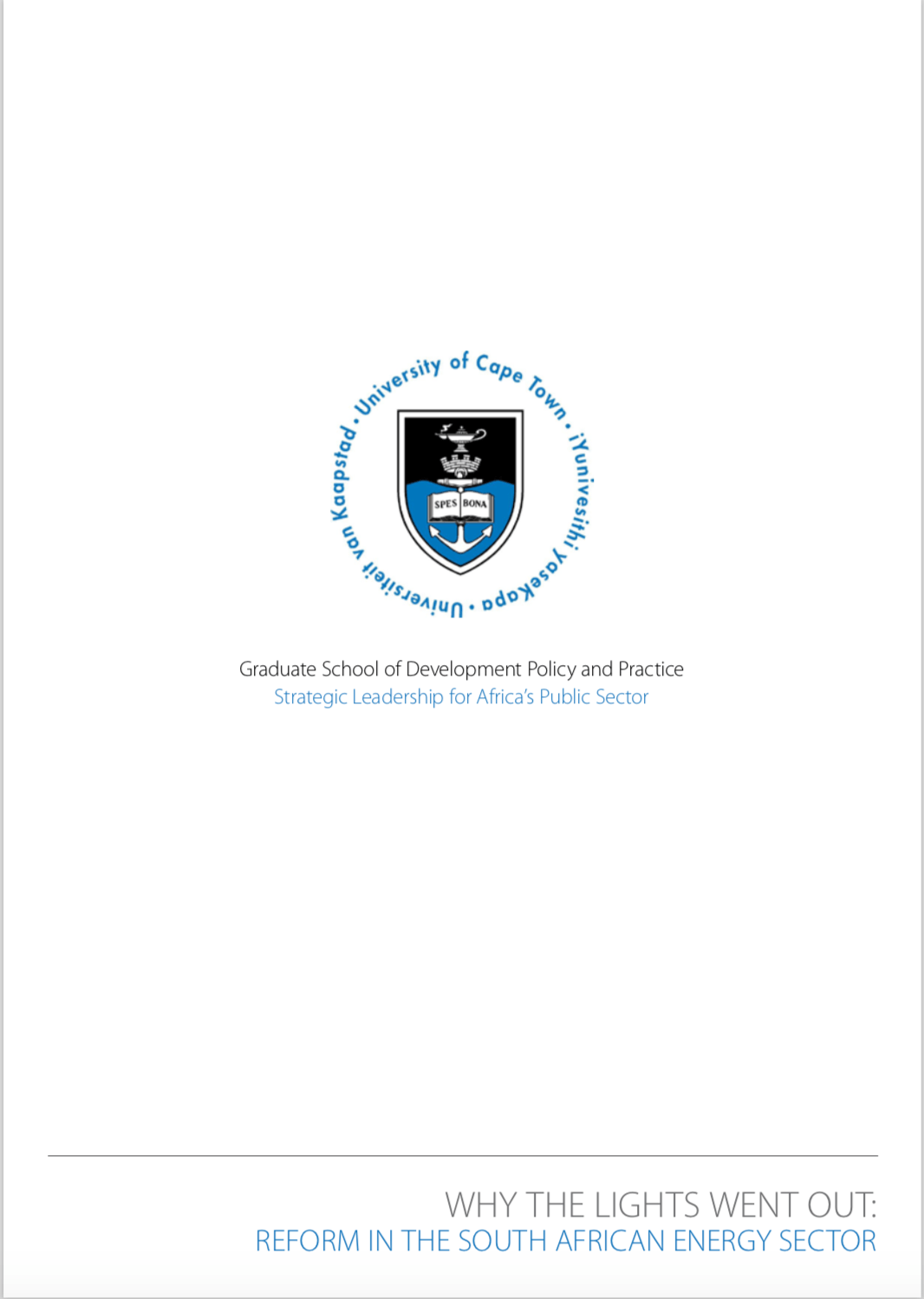By Tracy Ledger (van der Heijden), for the University of Cape Town’s Graduate School of Development Policy and Practice
In 2019, Eskom’s narrative is a cry of victimhood, laying blame with government and municipalities for what has become a national energy crisis. In this 2013 PARI case study, Tracy Ledger lays out the bones of how the monolithic parastatal locked down control of South Africa’s energy generation, thereby creating the foundations for its current failures. The country’s current debacle is now, five years since this case study, whether to unbundle the energy giant into smaller, more responsive, more responsible parts.
In 2008, South Africa’s lights went out. Literally. Problems began in December 2005 when damage to the Koeberg nuclear power station resulted in power cuts in Western and Northern Cape. The situation deteriorated until, in October 2007, Eskom – South Africa’s public power utility – began to turn off power to areas throughout the country. The national grid almost crashed. If this had happened, the entire country would have been without electricity for several days.
Electricity can’t be stored – it is drawn directly from power stations via the national transmission grid. When demand exceeds supply, power stations begin to trip out, compounding loads on remaining stations. Should the overload continue, the entire system can collapse, resulting in a national blackout. In order to avoid this, system engineers ‘shed some load’ on the system by switching off parts of the national grid. This is normally done in rotation. In South Africa, the rolling blackouts of 2007 lasted for about two hours.
South Africans struggled to come to terms with a strange new lexicon. Terms like ‘rolling blackouts’, ‘power outages’ and ‘load shedding’ became part of the national discourse. Reflecting popular sentiment, a protest website entitled Eskomsucks.co.za declared: ‘Lets dispense with euphemistic Eskom-speak and stop talking about load-shedding. These are power cuts!’.
Everyone agreed that something serious had happened. The general secretary of the African National Congress (ANC), Gwede Mantashe, called it a ‘disaster on par with the AIDS epidemic’. In a rare public apology, President Thabo Mbeki stated that the government had erred by not listening to requests by Eskom to increase generation capacity.
South Africans were shocked and confused. Eskom was widely regarded as one of the leading power utilities
in the world. Indeed, as recently as 2001, Eskom won the Financial Times Global Power Company of the Year Award for its technical excellence in plant production, maintenance and operation. Moreover, the government had adopted a new blueprint for restructuring South Africa’s energy sector almost a decade previously. What had gone wrong?
Towards the end of October 2007, a quarter of Eskom’s generation capacity was out of commission. Cities were paralysed by traffic gridlocks. Food processing enterprises and supermarkets lost their stock. At least one person died on an operating table. On 25 January 2008 – a date known as Black Friday in the mining industry – gold and platinum mines were forced to stop all production for five days. Businesses, other organisations and households spent huge sums of money on auxiliary generators, and estimates of lost productivity ran into billions of rands. […]



